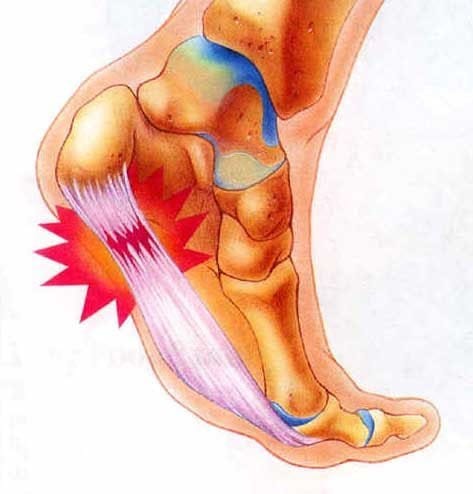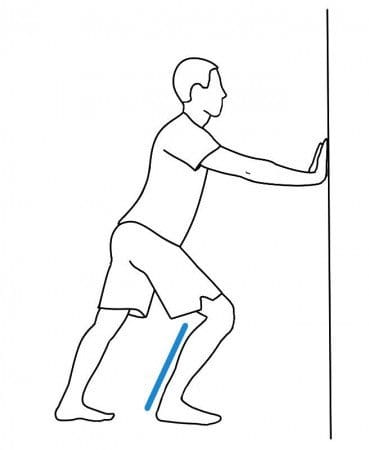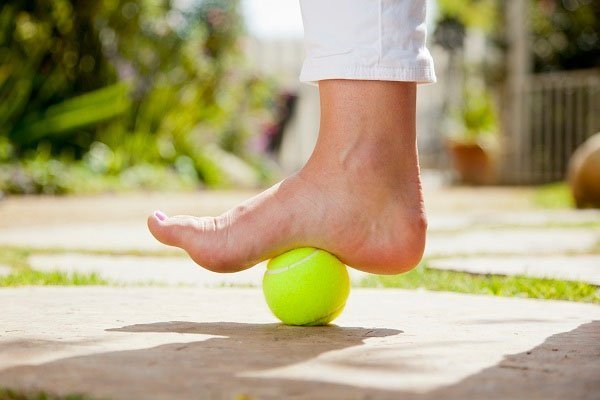Sometimes the simplest treatments are the most effective and you can do them from the comfort of your own home. A pain in your heel might not seem like a big deal but it actually affects how you walk and your ability to work out. We are referring to plantar fasciitis. Now, you’d think the best treatment would be a physiotherapist, right? Well, there is actually an extraordinarily easy trick you can try. In the plantar fasciitis tennis ball stretch you use only a tennis ball and your own body’s weight to relax the muscle in pain.
Before getting to the tennis ball tip, let’s quickly cover some need-to-know information.
What is Planters Fasciitis?

The plantar fascia is very thick band of tissue which stretches from your heel bone to your toes and creates that arch in your foot. Overuse or overstretching can make it become inflamed.
According to Medline Plus, plantar fasciitis is one of the most common foot conditions, and the pain it causes, especially in the heel, makes walking difficult. Conservative treatment that includes heel and foot stretching exercises usually improves the condition with time.
Risk Factors

- Flat feet;
- High arches;
- Sudden weight gain;
- Shoes with soft soles, or poor arch support;
- A tight Achilles tendon;
- Long-distance or downhill running.
As it is one of the most common heel injuries, it develops from more than one cause. Luckily for you, it can be treated with some simple and smart stretching.
Symptoms

- Heel spurs – bony growths on the heel bone;
- Pain in the bottom of your heel;
- Slight swelling, redness and tenderness on your heel;
- Most people experience increased pain in the morning followed by gradual improvement during the day;
- Your pain may become a dull ache by the end of the day and show further improvement with rest.
Prevention

According to Medline Plus, the best prevention for plantar fasciitis is maintaining flexibility around your ankle, especially the calf muscles and Achilles tendon.
How do you know if your ankles are flexible? Worry not; we have an easy test and a way to increase your ankle flexibility. Just put your toes against the bottom of a wall, with the opposite leg staggered slightly behind you. Put yourself in a position you would be in if you were lunging. Then bend the knee of the forward leg, so it moves forward and touches the wall itself. Do not move your foot of the ground, while doing this. Keep your foot firmly placed in front of the wall. If your knee can touch the wall with ease, good job, you have flexible ankles. If not… you need to work on it.
Check this guide for additional tools for treating plantar fasciitis.
Plantar Fasciitis Tennis Ball Stretch
Plantar fasciitis commonly improves over time, usually between 6 and 18 months, without treatment. With treatment, the condition can improve more rapidly, often in less than 2 months.

Most importantly, treatment also helps to relieve the pain and discomfort of the condition. Stretching exercises relieve the tightness of the plantar fascia tissue. Stretching also relieves the tightness of your calf muscle and Achilles tendon. For plantar fascia and general heel pain, our most recommended stretch is the tennis ball stretch.
The plantar fasciitis tennis ball stretch should create a pulling feeling in your muscles without causing pain. You should perform the stretch while seated. Place the arch of your foot on the tennis ball and roll the ball back and forth with the arch of your foot. Simply push your foot onto the ball using your own body weight. As your condition improves you can perform the tennis ball stretch while standing as well. See the video for more details.
For more on heel and foot pain check these 5 foot exercises.
Sources:
http://www.livestrong.com/article/370083-tennis-ball-stretch-for-plantar-fasciitis/
Image Sources:
http://www.thermoskin.com/images/uploads/content/news/FXT_Illo_HR.jpg
http://corewalking.com/wp-content/uploads/2011/08/plantar-fasciitis.jpg
http://juronghealthconnect.com.sg/wp-content/uploads/2015/04/Get-on-the-Ball.jpg


